Are feathers and down vegan? Birds like geese, ducks, ostriches, peacocks, and many others are often farmed and prematurely slaughtered to produce meat, eggs, leather, feathers, and down. For this reason, outside of some rare natural occurrences, feathers and down aren’t vegan-friendly.
But to really understand the ethics of feathers, we need to get an idea of the business model and the process for “harvesting” these materials.
Only then can we start to get more confidence around what we’re supporting when we buy our next fluffy pillow made from feathers or a cosy jacket made from down.
In this blog post, I’ll explore the ethical implications of using bird feathers as well as 10 cruelty-free alternatives.
The feather and down industry
The industry relies on two types of feathers: primary feathers, which are found on the wingtips of birds, and body feathers, which cover the rest of the bird.
Body feathers are often harvested from ducks and geese raised for meat, while primary feathers come from various birds, including ducks, geese, and chickens.
Down is the soft undercoating of feathers closest to a bird’s skin. It’s made up of short, fine filaments that grow in clusters. The amount down on a bird varies by species. Ducks and geese, for example, have a lot of down because it helps keep them warm in cold water.
Feathers and Downs are in:
- Jackets
- Vests
- Duvet/comforters/quilts (or doona as we say in Australia)
- Pillows/cushions
- Sleeping bags
- Mattresses
The feather and down industry is a USD 6.6 billion global market. The bulk of that money comes from the sale of bedding products, followed by clothing and other textiles.
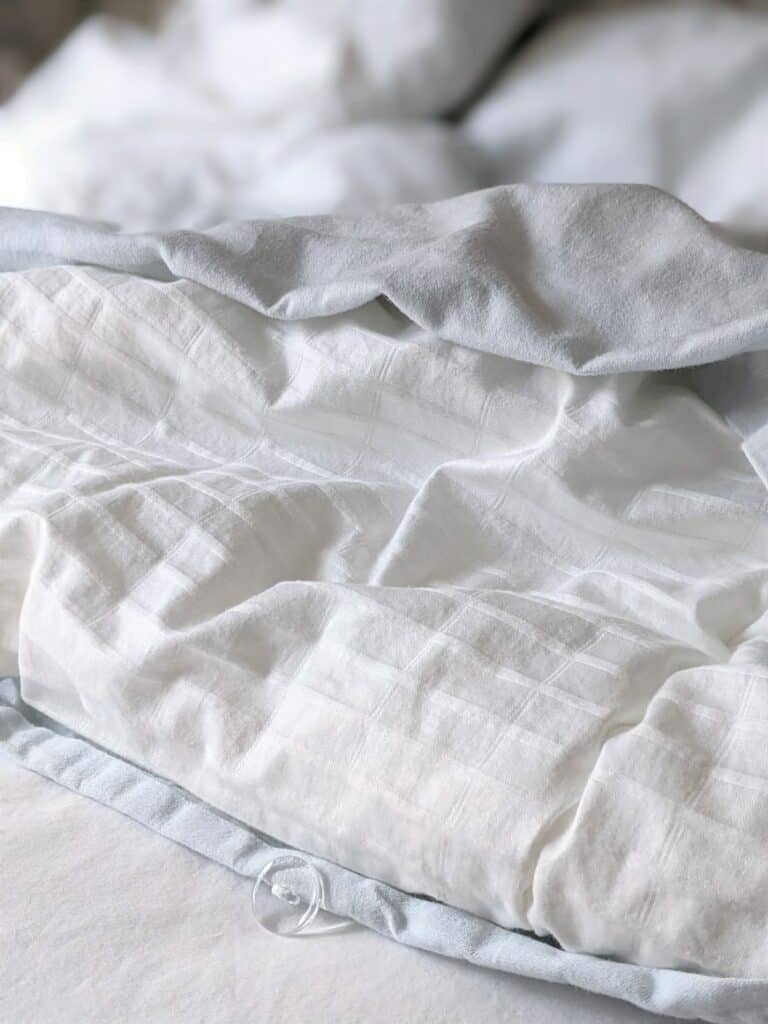
China is the top exporter of bird skins and feathers, accounting for 45.6% of production and the United States is the largest importer at 14.6% (source).
While the feather and down industry is big business, it’s also faced some challenges in recent years. One of those challenges is finding enough feathers to meet the demand for products.
The industry has long been reliant on a limited number of suppliers, most of them based in China. However, due to the country’s growing economy, the cost of feathers has increased, and their supply has decreased.
Another issue for the industry is animal welfare. In some countries, there are no regulations governing how animals can be treated. There have been cases of ducks and geese being mistreated to harvest their feathers and down.
But this is only the tip of the iceberg when looking at animal ethics in producing feathers and down.
How feathers and downs are harvested
When researching this article, I was mildly shocked by just how many birds are farmed for various use cases. Through these farming practices, the ethics of feathers and down becomes clearer.
Below is an overview of how birds like ducks, geese, ostriches and peacocks are farmed and how their feathers support the farming cycle.
Ducks
Ducks have been farmed for meat and feathers for thousands of years and are one of the most populated bird species on the planet.
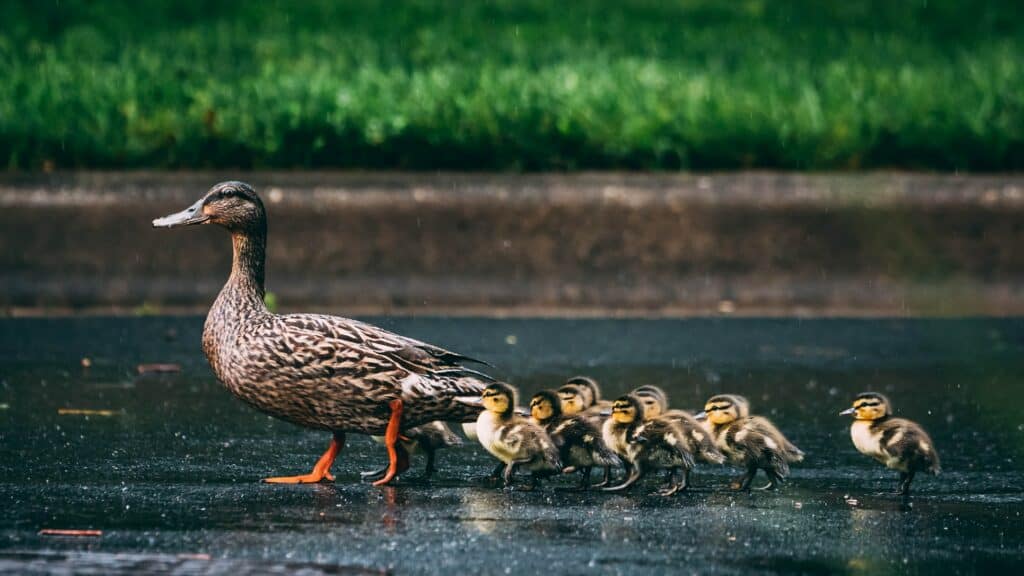
The most popular duck breed farmed for both down and meat is the Pekin duck. It’s a fast-growing bird that reaches slaughter weight in around seven weeks — yet the average lifespan is 9-12 years.
While some countries have outlawed the force-feeding of ducks to produce foie gras, most down and feather production still comes from birds that have been intensively farmed.
Geese
Geese are another bird whose feathers and downs are popular for bedding, jackets and quilts.
The most common breeds of geese originate from Europe and are thought to be descended from the wild Greylag goose.
Like ducks, geese are also subject to intensive farming practices, with a large percentage of them force-fed so folks can enjoy eating their fattened up livers.
Geese can live up to 25 years, but 700 million are slaughtered each year at the ripe age of 4 months.
Ostriches
The ostrich is the largest bird on the planet, weighing up to 150kgs (330 pounds) and running over 70kms (43 miles) an hour in hot Savana and woodlands in Africa.
Unfortunately, for them, ostrich feathers are premium and were once so valuable they were used as currency.
Nowadays, they’re still highly sought-after for their beauty and durability, or you know…feather dusters.
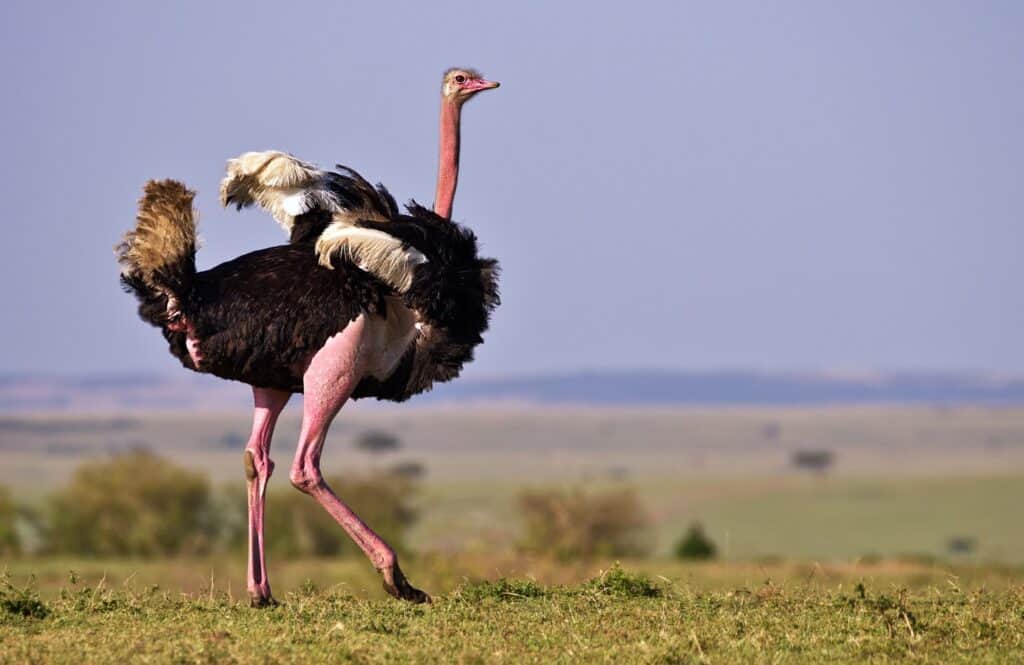
Ostriches are farmed worldwide, but the majority of commercial farms are found in South Africa, Australia, and the United States.
While ostriches aren’t typically force-fed, they’re subject to other intensive farming practices.
These large birds live up to 60 years old but are slaughtered at the 12-month mark and processed for leather, meat and feathers. Their carcass alone yields $1,500 per bird.
Approximately 350,000 ostriches are farmed and slaughtered each year, with South Africa doing most of the killing at 43% of the market.
And if all of that isn’t horrifying enough, ostriches are ridden for entertainment.
Peacocks
Peacock feathers are perhaps the most iconic and instantly recognisable of all.
These beautiful birds are farmed for their feathers which are used in various ways, including fly-fishing lures, arts and crafts, and even as fashion accessories.
Most peacocks farmed for their feathers are from India, where the government regulates the industry.
While the feathers of these birds are popular for various uses, the intensive farming practices used to produce them have come under scrutiny in recent years.
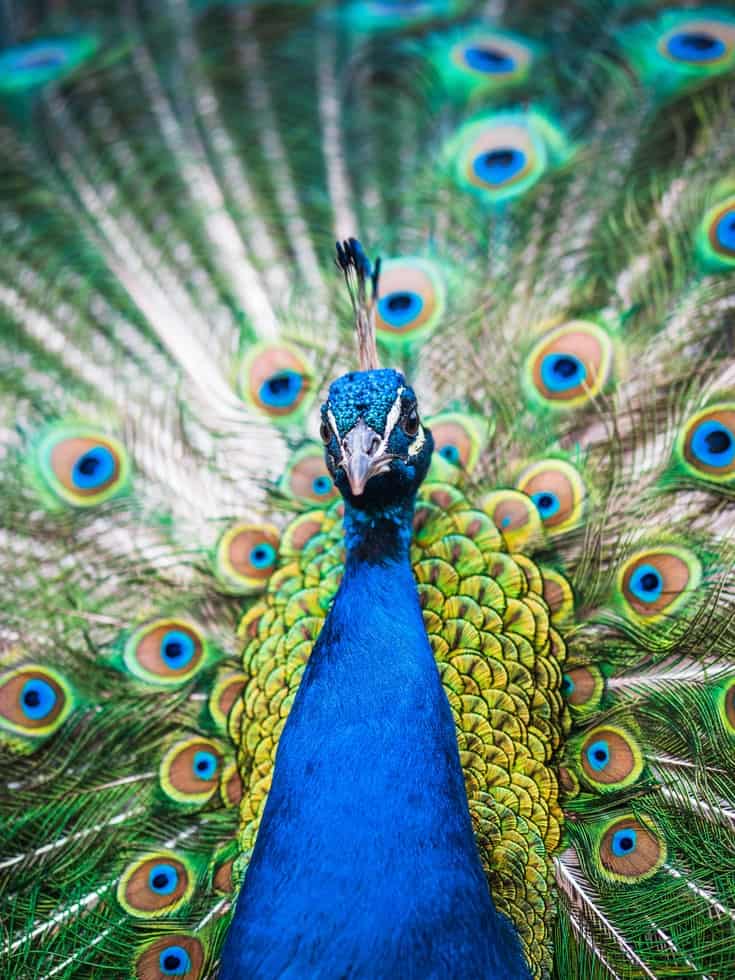
Animal welfare organisations have raised concerns about the treatment of these birds and the impact that feather production has on the environment.
As consumers, it’s essential to be aware of where our downs and feathers come from and to make informed choices about the products we buy.
Are feathers vegan?
Feathers and downs are commonly perceived as a by-product of the meat business, much like leather, wool, and gelatine. However, with a lucrative 6 billion dollar market with highly premium consumer goods, feathers have become a significant revenue source for suppliers.
Farmers bank on income from feathers and downs, incentivising more breeding, unideal living situations, and premature death. So while birds are not slaughtered purely for their feathers, they’re at least partially killed for those reasons.
Beyond the perpetual exploitation through bird farming, the plucking procedure also varies greatly depending on the situation. For example, ducks and geese used for down have their feathers ripped out while they’re still alive in a process called live-plucking.
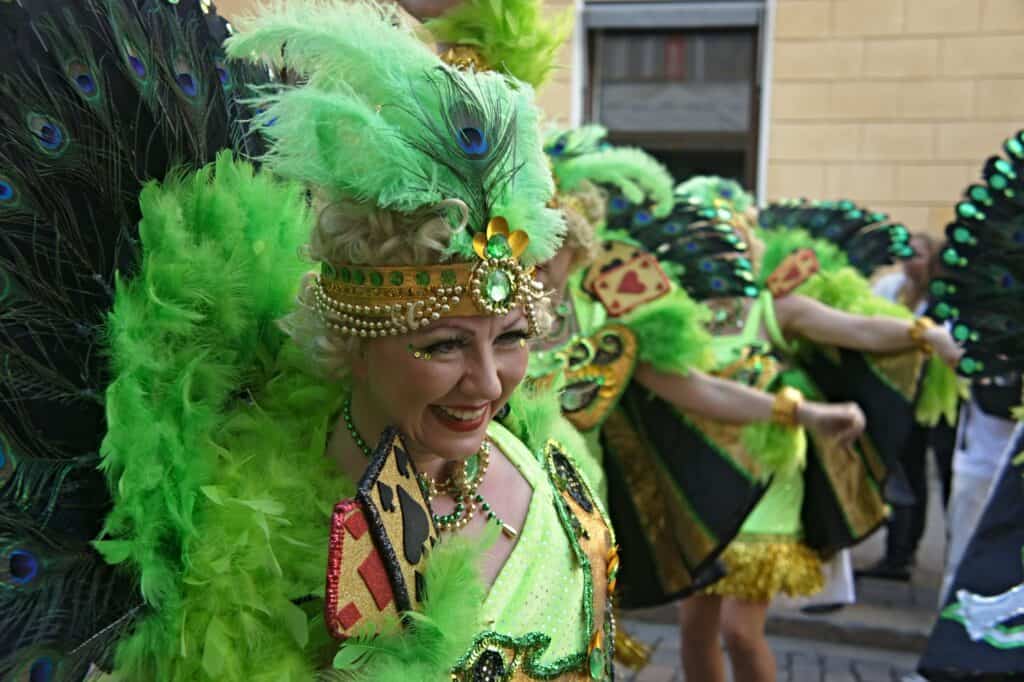
Some workers have claimed that it’s harder to pluck geese feathers when they’re dead as their body stiffens up.
Live plucking causes significant suffering to the goose, and parts of the bird’s skin are occasionally ripped away. Geese are plucked once every 6 weeks, on average, and up to 15 times throughout their life. Some individuals even perish as a result of the agony.
The bottom line is, if you care about animal welfare, there’s no such thing as a “humane” feather, at least from these farmed sources. Every part of the process involves some cruelty to birds.
The best way to ensure that no animals are harmed in making your clothes is to buy vegan items (more on that later). There are other options to support ethically sourced down — but it will cost you.
Can feathers be ethically sourced?
A few companies have started to source down feathers from ducks and geese that have been “ethically killed.”
Ethical down is defined as feathers from birds that were not live-plucked, force-fed, or raised in cramped conditions. These companies often work with small family farms where fowls have more space and are free to roam.
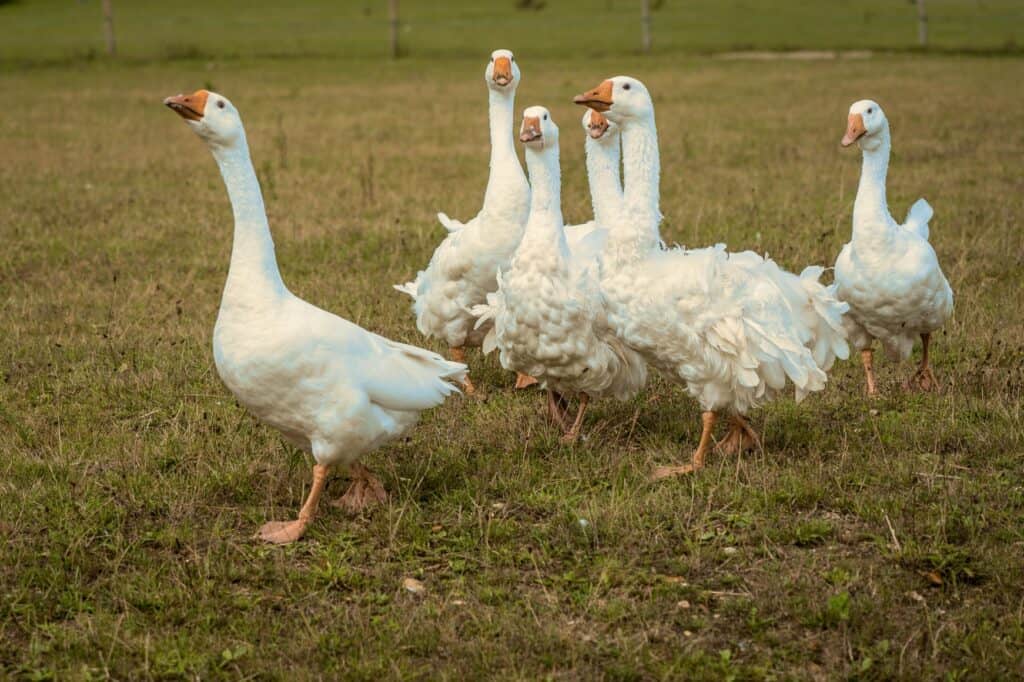
The problem is, there’s no guarantee that these birds were actually treated ethically. The term “ethical” isn’t thoroughly regulated, so companies can basically use it however they want.
Furthermore, you can’t ethically or morally kill another sentient being that doesn’t want to die.
A truly cruelty-free solution is to source naturally moulted feathers. Moulting is where a bird sheds its old feathers and grows new ones. This process happens a few times a year, so there’s no need to kill the bird for its feathers.
As you can imagine, it’s tough to gather feathers in this manner and isn’t a scalable solution for brands — although some small practices exist.
Talking about difficult sourcing, an ethical alternative to down comes from the Icelandic eiderdown. Eiderdown is the softest, fluffiest and warmest down in the world. It’s also the most expensive. I’m talking over USD 6,000 for a comforter!
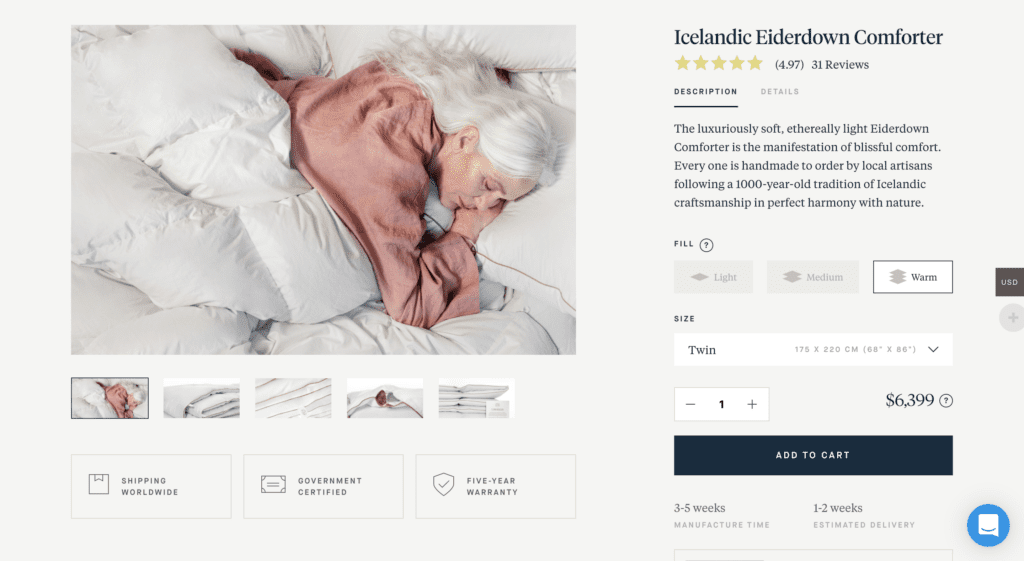
The eider ducks that provide this down live on the coast of Iceland and are a protected species. The feathers are hand-gathered from abandoned nests, so no birds are harmed.
This is an ethical alternative to synthetic materials, but it’s not perfect. First, it’s only available in limited quantities. Second, the high price tag puts it out of reach for most people.
So what’s the best option?
The best option is to buy vegan items. This way, you can be sure that no animals were harmed in the making of your clothes.
10 Vegan-friendly alternatives to feathers and down
With technology improving, there are now many other options that can replace feather and down. Let’s look at some examples.
1. PrimaLoft
PrimaLoft is a synthetic insulation made from ultra-fine fibres. It was initially developed for the US Army as an alternative to down feathers.
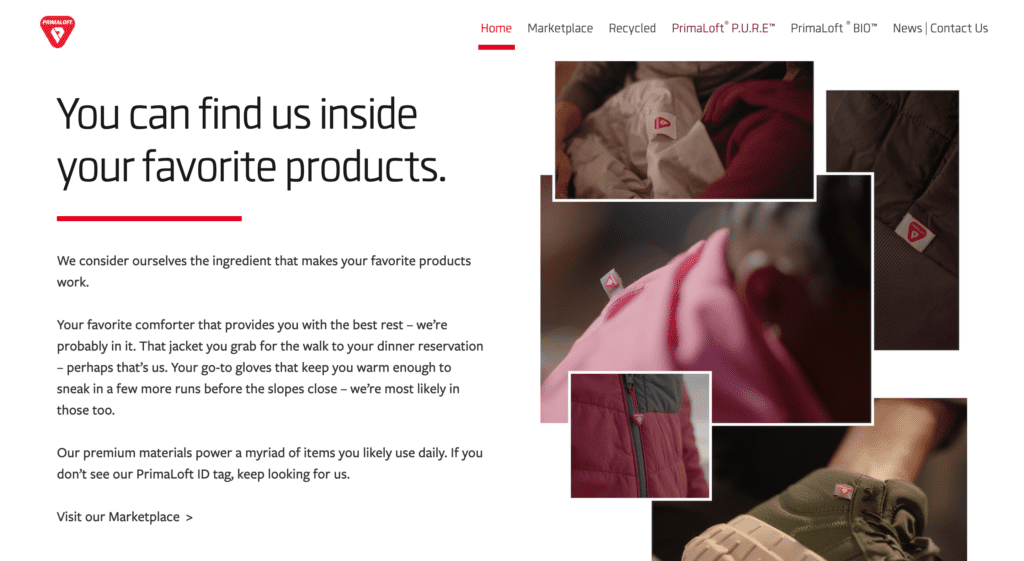
PrimaLoft is now used by over 900 brands globally and trusted by Olympians, designers, militaries and explorers.
It’s available in various products, including jackets, gloves, hats, and sleeping bags.
2. TENCEL lyocell
TENCEL is a cellulose fibre made from sustainable eucalyptus trees. The fibres are incredibly fine, resulting in a soft, luxurious feel.
The TENCEL manufacturing process is also incredibly environmentally friendly. It uses significantly less energy and water than other textile production processes.
Sijo is an example of a brand that uses TENCEL to produce exceptional bedding. Their products are Oeko-Tex Standard 100 certified raw materials, all sourced without harmful chemicals, dyes or pesticides.
3. PLUMTECH
PLUMTECH is synthetic padding created to imitate the fluffiness of down feathers while preserving the advantages of technological thermal lining.
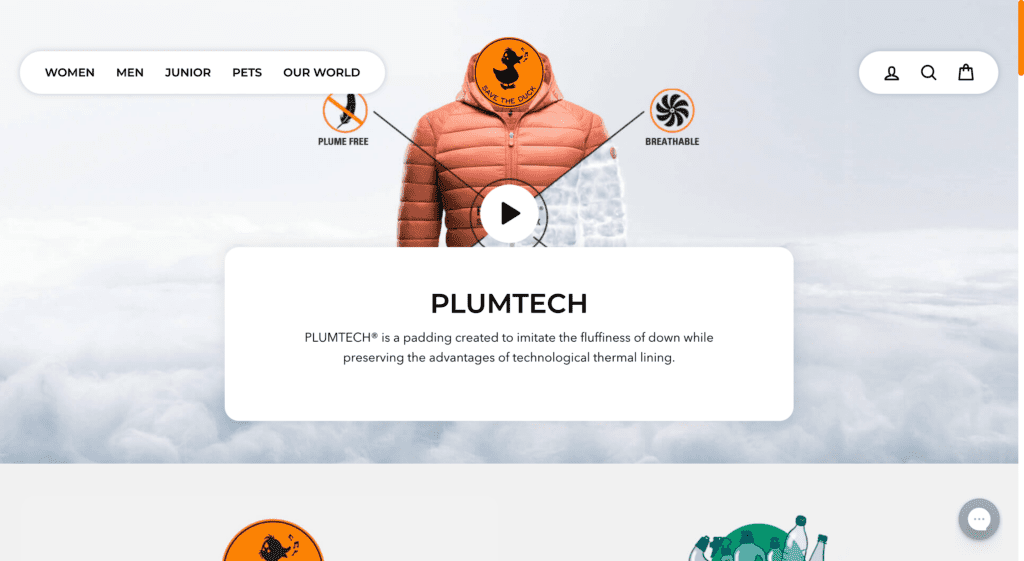
Compared to traditional polyester padding, PLUMTECH allows for the production of light garments and guarantees total freedom of movement. Furthermore, it guarantees easy care — washing and drying garments is extremely simple.
RECYCLED PLUMTECH is a padding made of polyester fibre from recycled materials, including plastic bottles. Its features of thermal and breathability are identical to classic PLUMTECH. All justifications related to quality make it a valid alternative to traditional padding.
4. Thermal R
Thermal R creates a comfortable microclimate next to the skin, thanks to its hollow channels that allow perspiration to pass through quickly, keeping you dry. The unique cross-section of the fibre also makes it possible to increase the surface area in contact with the air, which improves thermal insulation.
Thermal R has a good warmth/weight ratio, breathability, high loft and low compressibility.
5. CleanBamoo
CleanBamboo is a proprietary fabric made by the company Ettitude. It’s made from 100% bamboo lyocell and is naturally antibacterial, hypoallergenic, and odour-resistant.
Ettitude’s products are also Oeko-Tex Standard 100 certified, meaning they are free of harmful chemicals.
6. Thinsulate
Thinsulate is a synthetic microfibre insulation developed in the 1970s by DuPont. It’s made of ultra-fine fibres that trap heat and provide warmth even when wet.
Thinsulate is available in various products, including jackets, gloves, hats, and sleeping bags.
7. WELLON
WELLON is a synthetic insulation designed to provide the warmth of down without using animal materials. It’s made of ultra-fine polyester fibres that form small air pockets. These air pockets create an insulating barrier against the cold.
WELLON is available in various products, including jackets, gloves, hats, and sleeping bags.
8. FLOCUS
FLOCUS is a naturally versatile fibre made from the kapok tree. It can be spun into the thinnest yarn counts and blended to create a wide range of fabrics and insulation materials.
Products containing FLOCUS are naturally comfortable, lightweight, hypoallergenic, and environmentally friendly.
FLOCUS is available in various products, including yarns, fabrics, and insulation materials.
9. Nudown
Nudown creates a clean, ethical, and sustainable alternative to down feathers. It’s made of ultra-fine polyester fibres that form small air pockets. These air pockets create an insulating barrier against the cold.
As weather conditions shift, you can quickly release air to cool down or add more air for even greater insulation.
Nudown has a line of jackets and vests to keep you warm without any traces of animal cruelty.
10. FLWRDWN
FLWRDWN is a biodegradable material made from wildflowers and biopolymer, infused with aerogel to increase performance and durability.
This innovation shows that there are no limits to what we can achieve with the resources that are available in nature – all without using or harming animals.
The apparel company Pangaia took a foray into future fashion with its FLWRDWN puffer jackets.
So there you have it. A variety of vegan-friendly alternatives to feathers and down that will keep you warm all winter long.
And as always, buying second-hand conventional products is always a good option.
Staying warm without exploiting birds is possible
Feather and down are co-products of the poultry farming industry, which comes with multiple levels of animal exploitation. Products containing cruelty-free feathers are either too hard to find or too expensive.
Luckily, the options for vegan-friendly clothing are increasing all the time, so it’s easier than ever to find items that don’t contain any animal products. You can find everything from jackets to hats to sleeping bags made with synthetic materials that replicate the look and feel of down feathers.
I hope this information helps you make more ethical choices when shopping for winter gear and duvets. Thanks for reading!

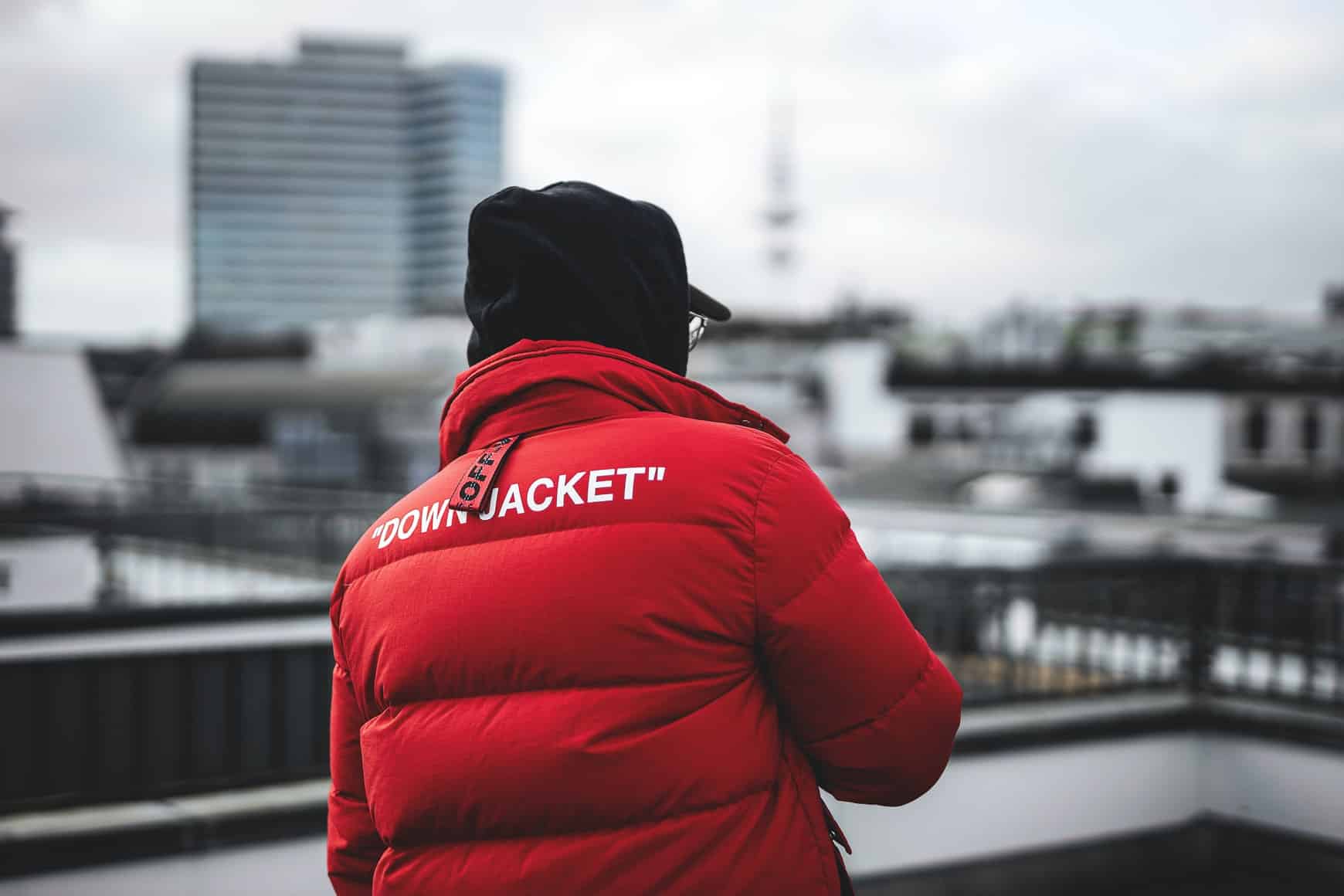
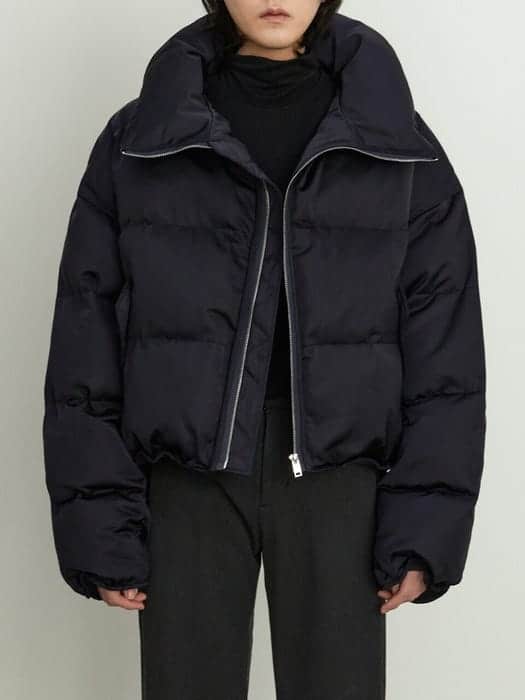
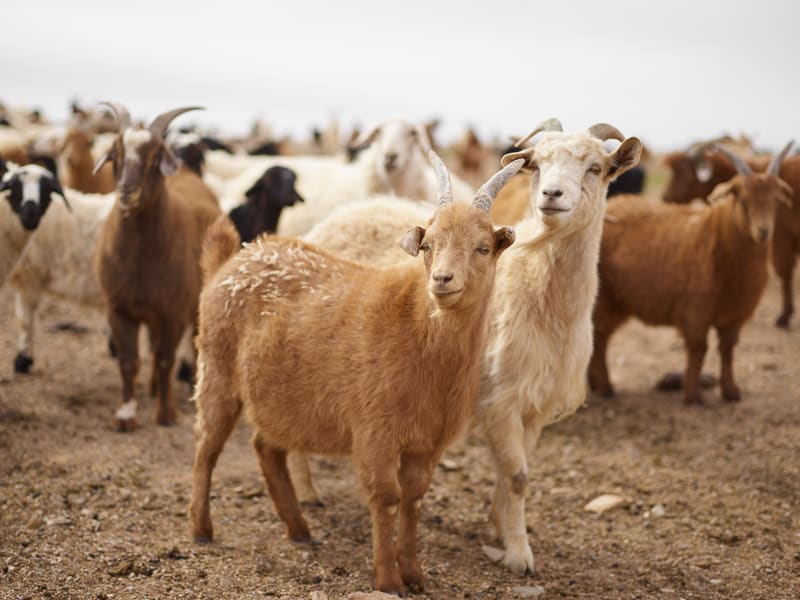
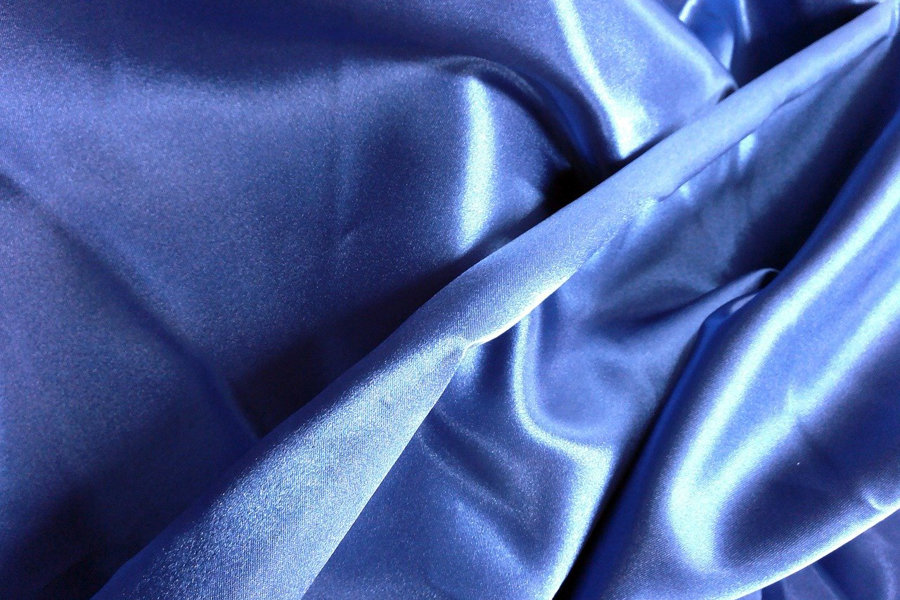
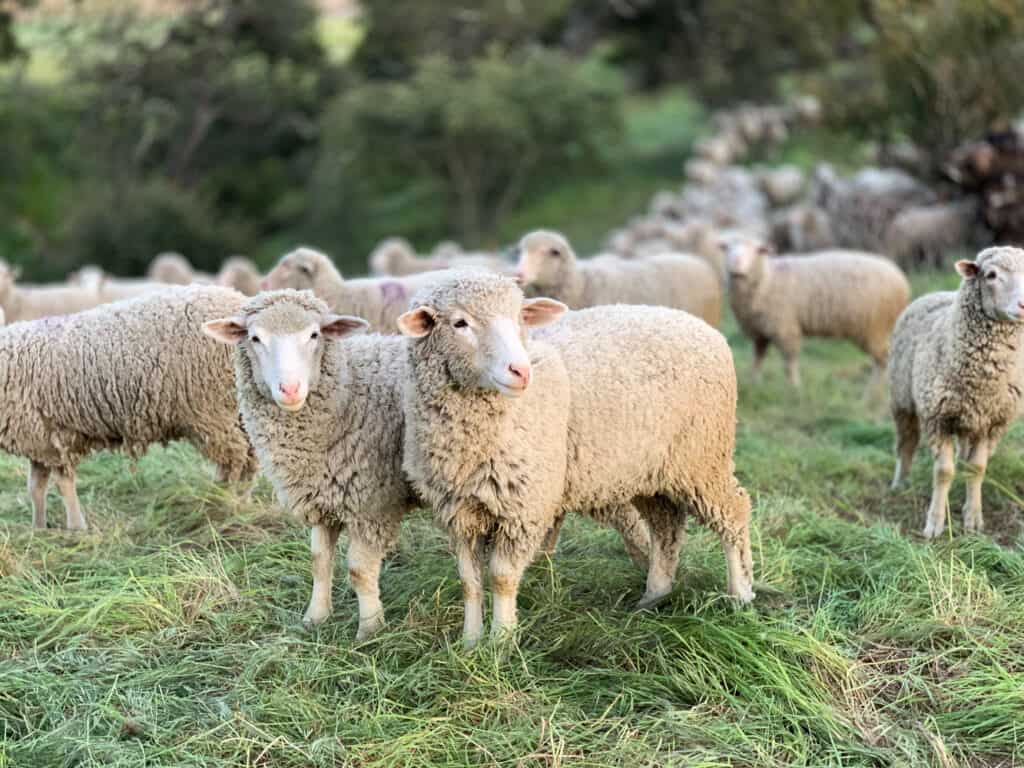
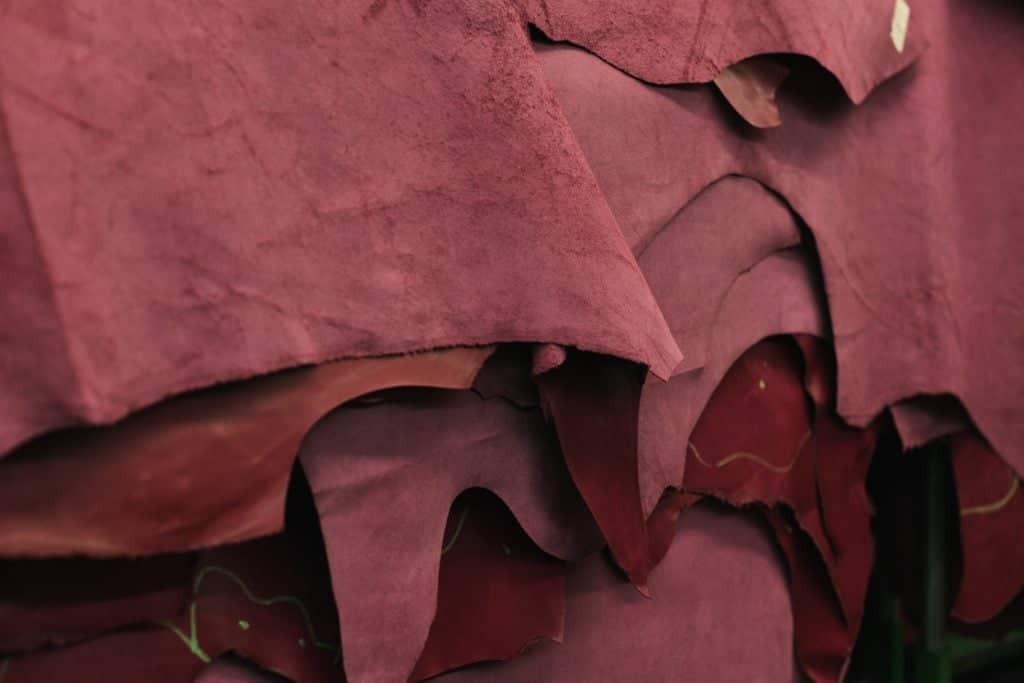
Uggh I felt this so bad when I was buying a sleeping bag for a hiking trip last year! Down’s use is understandable for so many reasons — the lightness and warmth ratio just cannot be matched by synthetic.
But being vegan there was no way I was ever going to buy down, no matter how bulky the synthetic sleeping bag was going to end up being.
It is just frustrating that with so much innovation in fibre technology, there were seemingly no sleeping bags using material other than down or synthetic (i.e plastic). I just really hope that one day these alternatives you mention do become mainstream. Like do we really need to pluck geese alive just to look good in a puffa jacket, especially in Australia’s version of ‘winter’
Thank you for bringing this to people’s attention.The live plucking is horrendous and I assume it would be akin to us having our nails pulled out while we are concious. I am madly in love with the designs of Leanne Ford for Crate and Barrel and wanted to buy her “Ever” sofa, named after her little daughter, but I can’t bring myself to do it because it has down feathers. I wrote to her on Instagram, as well as her product developer about this but never received a reply. I am hoping that they took my suggestion to heart to create vegan cushions for this gorgeous sofa.People were complaining about the feather’s poking them through the fabric anyways, so it would make good business sense for them, as well as being cruelty-free.
Hi Carolyn, great effort in trying to reach the brands’ product team. It’s those gestures, even if they go nowhere at the time, that challenge people to get creative with materials. Thanks for sharing!
Tencel production is extremely harmful to both environment and workers!
Hi Anne, I’ve seen varied reports about the impact of Tencel production. I guess there’s a sliding scale depending on the source. Thanks for your input.